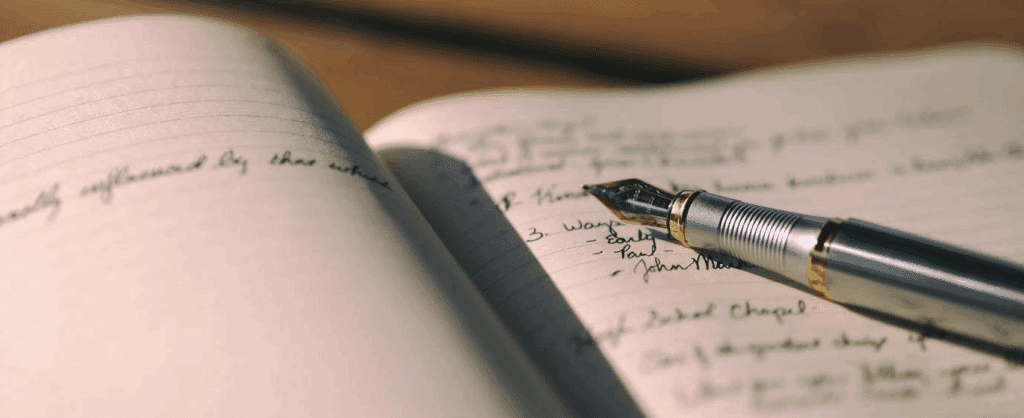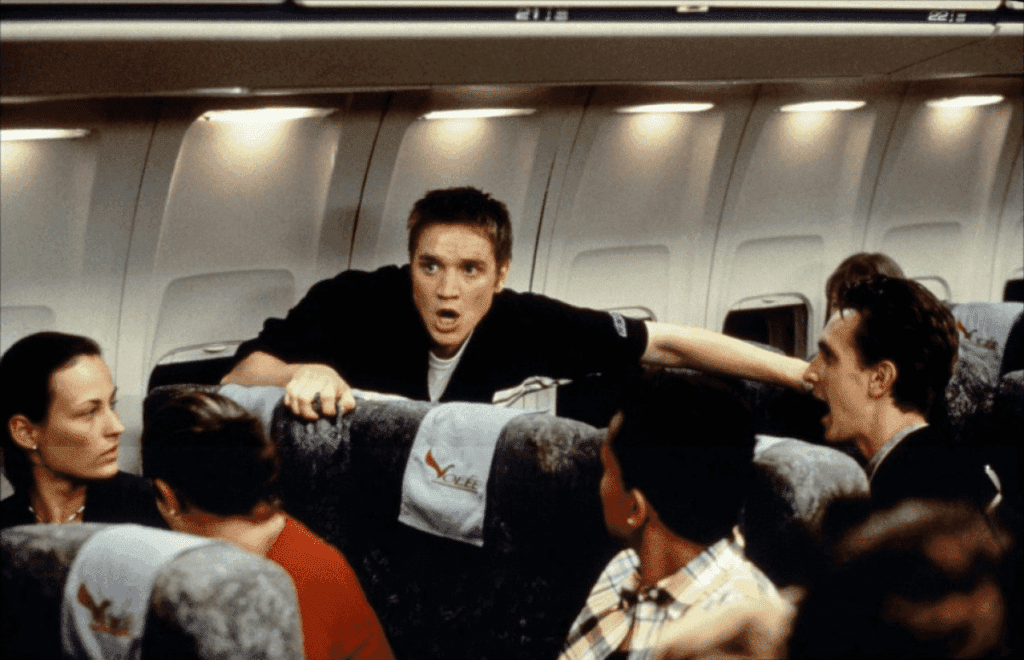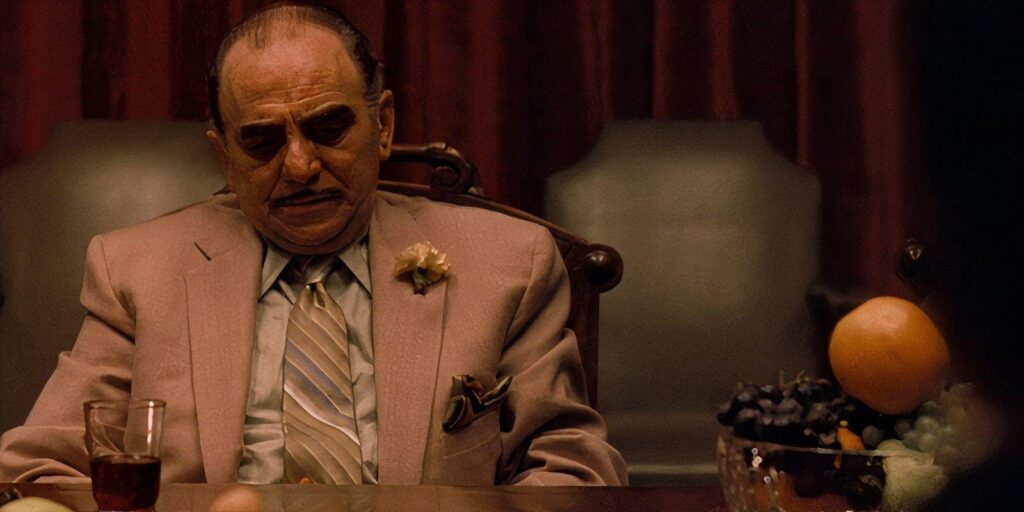
There’s never a greater thrill than watching a movie and feeling like something big is on the way and then having your suspicions confirmed later on. Well, that’s the power of foreshadowing! It’s a storytelling technique used to plant subtle (or downright obvious) clues about what’s to come.
If you can do it well, you can deepen your audience’s engagement, enhance your story’s theme and best of all, create satisfying payoffs that people will be talking about long after they leave the movie theater.
If you’re a screenwriter or filmmaker trying to crack foreshadowing in your next project, then you’ve come to the right place. Today we’ll explore what foreshadowing is, why it matters in storytelling, its different types and how you can use it effectively in a screenplay.
Of course, we’ll have a helping hand along the way from some of the most iconic foreshadowing examples in film history.
So, without further ado…
Table of Contents
- What is Foreshadowing? Definition and Key Components
- Why Does Foreshadowing Matter in Film?
- The Different Types of Foreshadowing
- Iconic Examples of Foreshadowing in Film
- How to Use Foreshadowing Effectively in Your Script
- Common Mistakes to Avoid
- Frequently Asked Questions (FAQ) About Foreshadowing
- Conclusion
What is Foreshadowing? Definition and Key Components
Foreshadowing is a narrative device that hints at future events in a story.
It’s a form of set up which can be as subtle or overt as you like. Either way, foreshadowing prepares the audience for what’s to come involving dialogue, visuals, music or character behavior.
“What does foreshadowing consist of?” we hear you ask! Well, there are three key components that typically define it:
- It is intentional.
- It builds anticipation or suspense even if the audience can’t pinpoint exactly what it is.
- It provides payoff and feels earned rather than random.
Don’t get foreshadowing confused with exposition. Foreshadowing is a setup for payoff woven carefully into the story and helps to create conflict.

Why Does Foreshadowing Matter in Film?
Alongside its role as an enhancing plot device, foreshadowing has several important functions in film. Here are three ways it packs a punch:
1. Enhances Engagement
Take your mind back to the last movie you watched. Did you pick up any clues? Did you somehow work out that something big was on its way?
If audiences pick up on foreshadowing, even subconsciously, it creates a sense of intrigue. Instead of just watching the movie, we become active participants, scouring the screen for clues and trying to predict what will happen next.
By becoming active in the story, we can deepen our emotional investment in the movie which in turn creates a more memorable experience.
2. Builds Suspense
Suspense thrives on anticipation. When we plant the seed of a future event in our films, especially a negative one, it keeps our audience on edge.
Hitchcock’s famous ‘bomb under the table’ theory revolves around foreshadowing and audiences knowing more than the characters.
“There is a distinct difference between “suspense” and “surprise,” and yet many pictures continually confuse the two. I’ll explain what I mean.
We are now having a very innocent little chat. Let’s suppose that there is a bomb underneath this table between us. Nothing happens, and then all of a sudden, “Boom!” There is an explosion. The public is surprised, but prior to this surprise, it has seen an absolutely ordinary scene, of no special consequence. Now, let us take a suspense situation. The bomb is underneath the table and the public knows it, probably because they have seen the anarchist place it there. The public is aware the bomb is going to explode at one o’clock and there is a clock in the decor. The public can see that it is a quarter to one. In these conditions, the same innocuous conversation becomes fascinating because the public is participating in the scene. The audience is longing to warn the characters on the screen: “You shouldn’t be talking about such trivial matters. There is a bomb beneath you and it is about to explode!”
In the first case we have given the public fifteen seconds of surprise at the moment of the explosion. In the second we have provided them with fifteen minutes of suspense. The conclusion is that whenever possible the public must be informed. Except when the surprise is a twist, that is, when the unexpected ending is, in itself, the highlight of the story.” – Alfred Hitchcock
Chekov’s Gun is another such theory that uses foreshadowing. Find out more about it here.
3. Strengthens Story Structure
You may have discovered by now that great storytelling relies upon setup and payoff. Foreshadowing makes the climax or twists feel justified.
If a big reveal comes out of nowhere it doesn’t feel earned or part of the story. All the best ‘a-ha’ moments derive from when things click into place after earlier foreshadowing.
Plant early, pay off later.
Celtx helps you structure key reveals from draft to
final polish — try our screenwriting tools for free.
The Different Types of Foreshadowing
There are three main types of foreshadowing you can use in your work. Let’s explore them in more detail:
1. Direct Foreshadowing
Direct foreshadowing is when the audience is given a clear signal about what will happen. Examples of this include obvious dialogue, a prophetic dream, or a visual cue. It’s not always subtle, but it sure builds suspense!
Take Final Destination in which characters have premonitions of their deaths. You can’t get any more direct than that!

2. Symbolic Foreshadowing
Opposite to its direct counterpart, symbolic foreshadowing uses metaphorical hints to entice the audience into the story. A storm on the horizon could foreshadow upcoming emotional turmoil or a broken mirror could hint at a fractured relationship or identity.
In The Godfather, oranges frequently appear before acts of violence or death. While it’s not a literal clue, it’s something we as an audience can subtly pick up on. Their continuous appearance draws our eye and our attention over the course of the movie.

3. Dialogue-Based Foreshadowing
Characters will sometimes inadvertently hint at future events in conversation. While these crucial lines of dialogue can easily be missed during a first viewing, they gain meaning in retrospect.
Just like in The Sixth Sense, when Malcolm says, “I think I’m losing him,” we later realize the deeper truth behind the statement.

Iconic Examples of Foreshadowing in Film
Sometimes explanations just don’t cut it, and you need to see things in action. Here are some of the best examples of foreshadowing in the movie world:
Get Out (2017)
Jordan Peele’s Get Out is a foreshadowing masterclass! Early in the film, Chris the protagonist hits a deer with his car. While this feels like an isolated event, it foreshadows the movie’s themes of racial violence and even ties into the story of Chris’ girlfriend’s father, who lost his mother in a similar accident.
Later Rose’s subtle lines like, “You know I’d never let anything happen to you, right?” have chilling meaning in hindsight.
Jaws (1975)
In Steven Spielberg’s hit movie Jaws, act one of the film’s structure sets up the danger long before we see the shark for the first time. The opening attack, eerie underwater camera angles, and the iconic score work together to foreshadow impending doom.
Brody’s early concern about the beach’s safety also adds to this, with his worries dismissed by the town. While this may seem insignificant early on, its these narrative seeds that later bloom into a full-blown crisis!
Parasite (2019)
Bong Joon-Ho’s consistent use of staircases, one up to the Park’s luxury apartment and down to the Kim’s basement foreshadows the class conflict and descent into violence that occurs.
The use of objects such as the Scholar’s Rock is also crucial. While it seems like a random gift, it becomes a recurring symbol and then a weapon, tying into the movie’s themes of aspiration, burden, and violence.

The Lion King (1994)
Even Disney has got in on the foreshadowing action! The Lion King is one that uses classic foreshadowing techniques.
Early in the movie, Scar’s ambitions are subtly hinted at through his conversations with Mufasa and Simba. While the direct foreshadowing in the song Be Prepared seems like entertainment in the way its stylized, the payoff is devastating with the stampede that kills Mufasa and sets Simba’s new path in motion.
Whether you’re hinting at heartbreak or a plot twist,
Celtx’s script insights help track the scenes that build tension and payoff.
Click here to try Celtx for free today!
How to Effectively Use Foreshadowing in Your Script
It’s one thing learning from some of the best filmmakers in the industry, but how do we implement effective foreshadowing into our own work?
If you’re a screenwriter, foreshadowing that elevate your storytelling to another level, if you use it well. Luckily, we have practical strategies you can use!
How to Use Foreshadowing in Your Script (4 Simple Steps)
Plan your Payoff First
Working backwards may seem strange, but as writers, we should always know where our story is going.
While you’re outlining your story, consider what twist, revelation or climax you want to deliver at the end of your script. Once you have that solidified, you can reverse-engineer your setup. Think of foreshadowing as you planting seeds that will blossom later.Use Visuals and Subtext
Foreshadowing doesn’t always need to be verbal. Try using visual cues, motifs and mise-en-scene. For example, a character hiding a loaded gun in a drawer may foreshadow its use later. A symbolic object can suggest fate or danger.
Subtlety is Key
We think you’ll agree that the best foreshadowing tends to fly under the radar. If we’re too heavy handed with foreshadowing, it can feel like a spoiler or ruin the payoff later on. Let the audience feel accomplished and put the pieces together themselves.
Let the Characters Do the Work
In real life, we reveal who we are in small ways. A minor act of cruelty or bravery from a character can suggest how they’ll act under pressure later. Foreshadowing doesn’t always need to be plot-based and can come from psychological sources.
Common Foreshadowing Mistakes to Avoid
While foreshadowing is a powerful tool, it can also easily backfire on us. Of course, there are things you can do to avoid tripping yourself up.
1. Don’t Be Too Obvious
If your clues are too blatant, you risk revealing your twist too early or making your story too predictable. You don’t want to spoon-feed your audience; you want to trust them to notice subtle clues and nuance.
2. Don’t Forget the Payoff
Foreshadowing shouldn’t be a random event in your story but must serve a clear purpose. If you drop hints that don’t lead anywhere, it creates narrative dead ends and can frustrate your audience. Even if it’s subtle, every setup needs a payoff. Period.

3. Don’t Overload the Script
While you want to give your audience enough clues for them to piece things together, there is such a thing as too much foreshadowing. You don’t want to overload your script and bog down the pacing.
Instead, focus on two to three strong setups rather than constantly signaling what’s going to happen. It’s a fine balance!
4. Don’t Confuse Your Audience with Red Herrings
Yes, red herrings can be useful, especially if you’re writing a mystery script. However, overusing red herrings can erode your audience’s trust. If every clue leads to a dead end, you may find your real twist doesn’t land as well as you intended.

Frequently Asked Questions (FAQ) About Foreshadowing
Foreshadowing is a narrative device that hints at future events in a story. It’s a form of setup that prepares the audience for what’s to come, involving dialogue, visuals, music, or character behavior.
Foreshadowing is typically defined by three key components:
1. It is intentional.
2. It builds anticipation or suspense, even if the audience can’t pinpoint exactly what is coming.
3. It provides payoff and feels earned rather than random.
Foreshadowing is a setup for a payoff, woven carefully into the story to help create conflict. Exposition, on the other hand, is the delivery of background information.
The three main types of foreshadowing are:
1. Direct Foreshadowing: When the audience is given a clear signal about what will happen, like an obvious line of dialogue or a prophetic dream.
2. Symbolic Foreshadowing: This uses metaphorical hints, such as a storm on the horizon hinting at emotional turmoil.
3. Dialogue-Based Foreshadowing: Characters inadvertently hint at future events in conversation, often gaining deeper meaning in retrospect.
One effective strategy is to plan your payoff first. By knowing the climax or twist you want to deliver, you can then reverse-engineer your setup, planting the necessary seeds early in the story.
Conclusion
Foreshadowing is one of the most rewarding tools in a filmmaker’s arsenal. When executed well, it not only enriches storytelling but also offers viewers a more immersive, emotionally resonant experience. From subtle visual metaphors to pointed dialogue, foreshadowing lays the groundwork for impactful twists and unforgettable climaxes.
Whether you’re watching a thriller like Get Out or a suspense classic like Jaws, start paying attention to how filmmakers drop narrative breadcrumbs. And if you’re crafting your own screenplay, consider how you can set up your major moments in advance to give your story cohesion and depth.
Remember: the best foreshadowing feels invisible until it pays off, then it feels inevitable.
Focus on your story, not your formatting.
Let Celtx’s Script Editor automatically apply all industry rules while you focus on the story.
Up Next:

Story Arc: What It Is, Types, and Examples from Film & TV
Great foreshadowing creates satisfying payoffs, which depend entirely on a strong story arc. Dive deeper into the structure of your script by learning how the inciting incident, rising action, climax, and resolution work together to give your narrative depth and cohesion.
